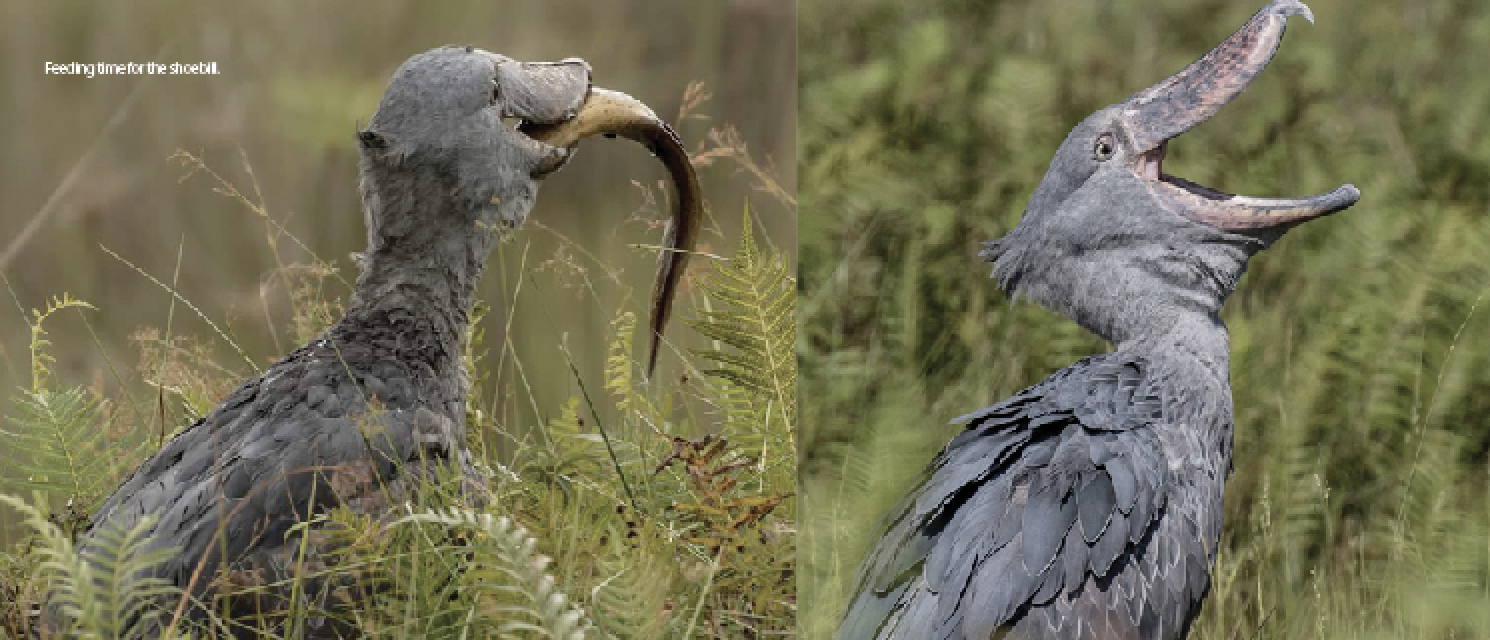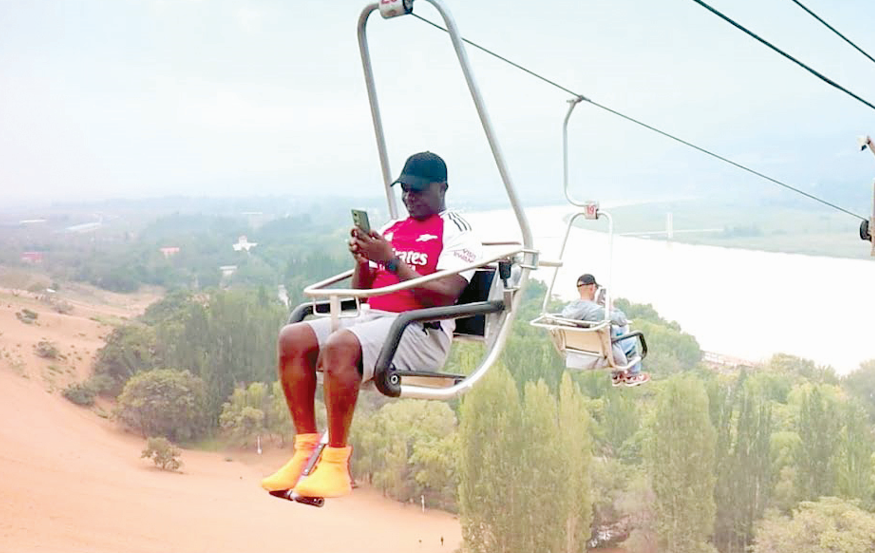A bird lover’s wetland dream trip

“Tugende, stop delaying, tugende,” cried our tour guide as he moved us to another canoe to get to Mabamba Bay Swamp, a bird lover’s dream destination. We had been sailing for a while, captivated by the fishermen drawing their catch and the magnificent Lake Victoria.
The swamp is said to host more than 260 species of birds amongst them the renowned shoebill, which attracts tourists from all over the world. I was among the eager travellers who David Ahimbisibwe, the owner and tour guide at Shoebill Boat Tours, took to watch this amazing creature.
The others were from Belgium and were all mesmerised by their maiden African trip. Dark clouds were gathering, and despite David brushing the idea of it raining heavily, it did, thankfully immediately after our thirst to watch the bird was quenched.
There are reportedly between 3,300 and 5,300 mature shoebills and that number is decreasing. There are various factors that threaten the existence of the bird such as livestock ranching, loss of marshland habitat to farming as well as fires and pollution. The shoebill acquired its name from its huge bill that looks like a shoe. It is similar to a stork and is classified as one.
Mabamba Bay Swamp lies on the edge of Lake Victoria and is characterised by small canals of water and lagoons filled with marsh. The papyrus swamp occupies 16,500 hectares and has been listed by the Ramsar Convention among Wetlands of International Importance.
On the canoe, we managed to see other birds in the reeds such as the papyrus gonolek, white-winged warbler, hamerkop, African jacana, the yellow-billed duck as well as the purple swamphen. We also caught a glimpse of the palm-nut vulture, a large bird of prey that lives near water.
As for the shoebill, we only managed to find one. It had a massive beak, with huge brilliant eyes. I think if we were to do a starring contest, this bird would emerge the victor. It was so still and we were warned to speak in hushed tones so as not to scare it away. According to David, the shoebill can stand motionless for hours with their bills held down against their necks. They are slow-moving, largely solitary and For safety purposes, they love open areas. It was interesting to watch them feed. They love fish and stand motionless on banks, attacking them with speed when one appears. They also feed on water snakes, turtles, monitor lizards and even young crocodiles.
Their elusive and antisocial behavior occurs throughout except during the breeding season. They lay one to three eggs in a large flat nest, which is constructed in the midst of sedges and swamp grasses, and nest in solitary. David tells us that even when two siblings hatch, there is usually rivalry amongst them, which results in only one surviving. The bird is so ruthless that the largest chick in the hatch will end up committing fratricide without a moment’s hesitation. The mothers will eventually eject the last bird standing after learning basic survival skills. It takes 140 days of nest attendance to get from new-laid egg to independent offspring, and three to four years to get from newly independent offspring to mature adult. They have an average lifespan of 25 years, especially when they live in the wild.
Another interesting fact that surprised me is that the bird practices urohydrosis – defecating on its legs to lower its temperature. This made them be confused to stocks, which also use their droppings to cool off.












